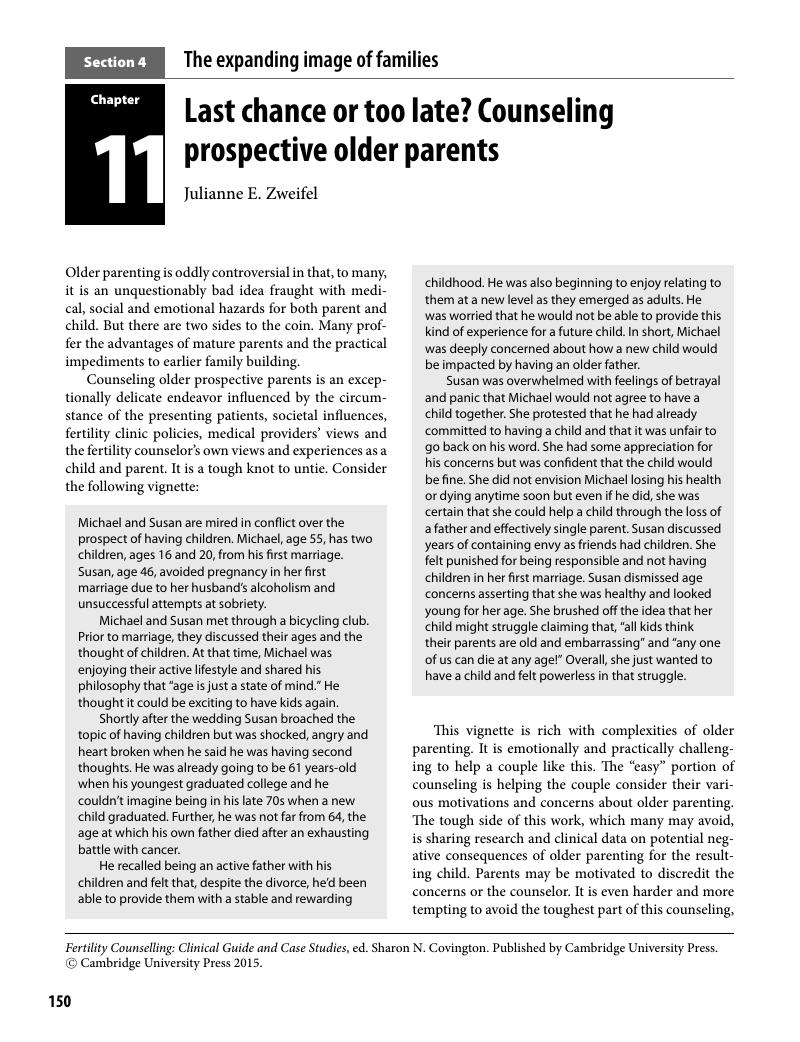Book contents
- Fertility CounselingClinical Guide and Case Studies
- Fertility Counseling
- Copyright page
- Dedication
- Contents
- Contributors
- Foreword
- Book part
- Section 1 Introduction
- Section 2 Therapeutic approaches
- Section 3 Third party reproduction: assessment and preparation
- Section 4 The expanding image of families
- Chapter 11 Last chance or too late? Counseling prospective olderparents
- Chapter 12 Counseling single women and single men choosingparenthood
- Chapter 13 Counselinglesbian, gay, bisexual and transgender patients
- Chapter 14 Adoption
- Section 5 Special topics in fertility counseling
- Section 6 Practice issues
- Glossary
- Index
- References
Chapter 11 - Last chance or too late? Counseling prospective olderparents
from Section 4 - The expanding image of families
Published online by Cambridge University Press: 05 May 2015
- Fertility CounselingClinical Guide and Case Studies
- Fertility Counseling
- Copyright page
- Dedication
- Contents
- Contributors
- Foreword
- Book part
- Section 1 Introduction
- Section 2 Therapeutic approaches
- Section 3 Third party reproduction: assessment and preparation
- Section 4 The expanding image of families
- Chapter 11 Last chance or too late? Counseling prospective olderparents
- Chapter 12 Counseling single women and single men choosingparenthood
- Chapter 13 Counselinglesbian, gay, bisexual and transgender patients
- Chapter 14 Adoption
- Section 5 Special topics in fertility counseling
- Section 6 Practice issues
- Glossary
- Index
- References
Summary

- Type
- Chapter
- Information
- Fertility CounselingClinical Guide and Case Studies, pp. 150 - 165Publisher: Cambridge University PressPrint publication year: 2015
References
- 2
- Cited by



